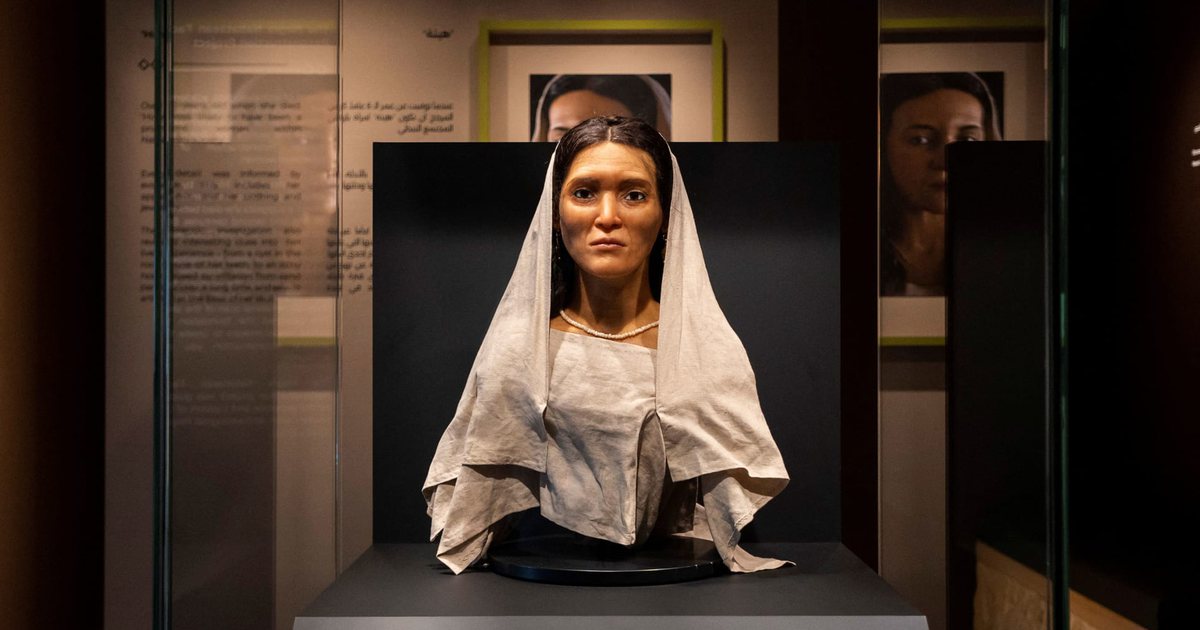History & Heritage
3.13.2023
Unveiling the Face of a 2,000-Year-Old Arabian Woman

A reconstruction of a Nabatean woman, who lived over 2,000 years ago, is now on display at the Hegra Welcome Centre in AlUla.
The exhibit marks an important milestone in Saudi Arabian history, as it coincides with the 15th anniversary of Hegra’s designation as the country’s first UNESCO World Heritage Site.
The reconstruction was carried out by a team of archaeologists, forensic scientists and model makers, under the auspices of the Royal Saudi Commission for AlUla (RCU). The reconstructed woman was named Hinat and her remains were discovered in 2015, at a burial site in the city of Hegra. This was once an important trading center of the Nabataeans, a people who lived in the southern Levant and northern Arabian Peninsula from the 4th century BCE to the 2nd century CE, deployed their formidable engineering skills, and controlled the trade routes that crossed their territory.

A facial reconstitution of Hinat, a Nabataean woman. (Image credit: Royal Commission for AlUla)
What makes this discovery all the more significant are the objects found alongside Hinat’s remains, including a silver mirror, a set of ivory combs, and a necklace made of gold and precious stones. These artifacts suggest that she held an important position in Nabatean society where women played an active role in the economy, held positions of authority in their communities, participated in religious ceremonies, and had access to education and training in various fields, including music and poetry.
Dr Helen McGauran, project lead for the reconstruction, said: “They’re still a fairly mysterious civilisation to a lot of people.
“I hope that this project will enable people to engage with the faces, the characters, the story of the Nabataeans in a much deeper way than perhaps has previously been realised”, she added.
Voir cette publication sur Instagram
Who were the Nabataeans?
The Nabataean kingdom, where Hinat’s remains were found, was once an important commercial center, controlling the lucrative incense trade from southern Arabia. The capital of the kingdom was Petra, a famous ancient city in present-day Jordan, known for its impressive rock-cut architecture and its unique script, used to write Aramaic, the lingua franca of the ancient Near East.
Voir cette publication sur Instagram
The Nabataean script is considered the forerunner of modern Arabic script, and many of its letters and features are found in modern writing. The script was also used for inscriptions on tombs, buildings and other public structures, as well as for commercial and administrative purposes, such as recording commercial transactions and tracking taxes and financial transactions.
popular

